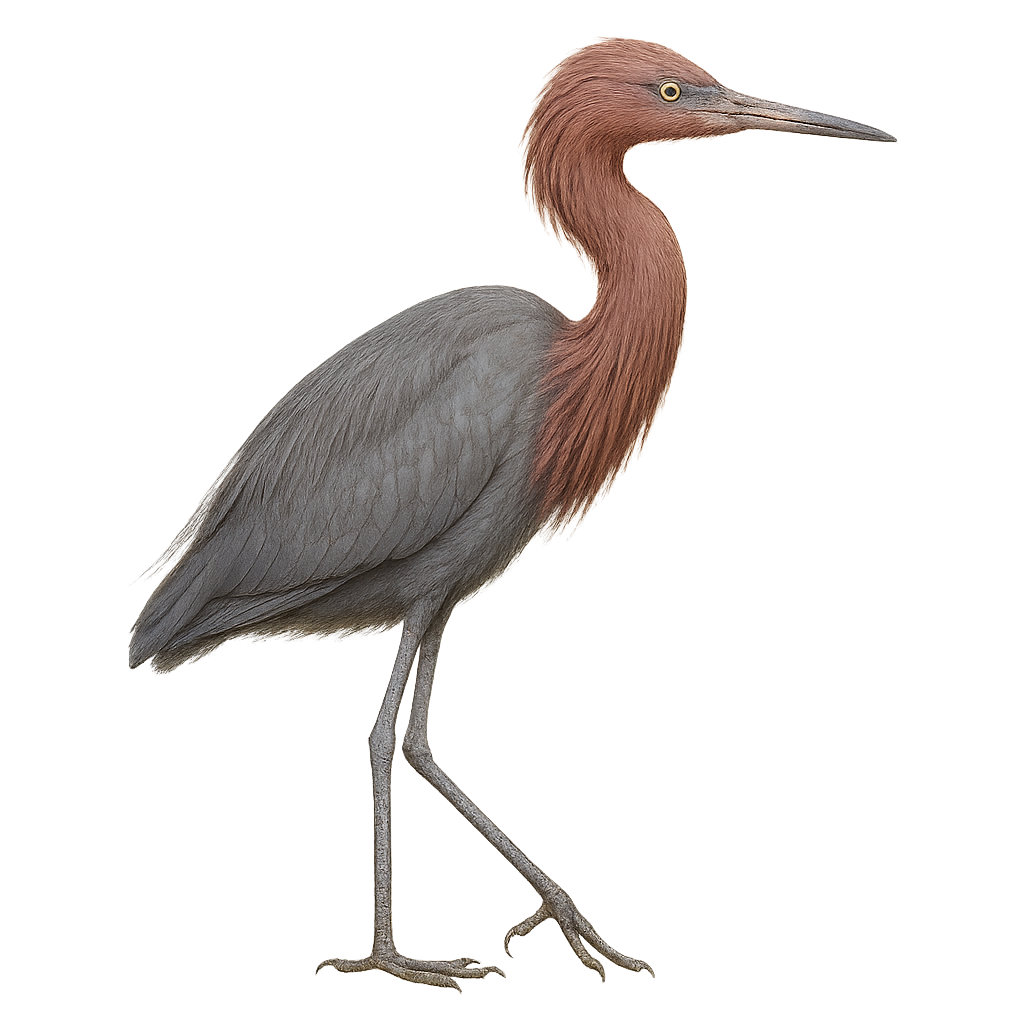Your wildlife photography guide.
Explore the reddish egret in detail, study its behavior, prepare your shots.
Where to observe and photograph the reddish egret in the wild
Learn where and when to spot the reddish egret in the wild, how to identify the species based on distinctive features, and what natural environments it inhabits. The WildlifePhotographer app offers tailored photography tips that reflect the reddish egret’s behavior, helping you capture better wildlife images. Explore the full species profile for key information including description, habitat, active periods, and approach techniques.
Reddish Egret
Scientific name: Egretta rufescens

IUCN Status: Near Threatened
Family: ARDEIDAE
Group: Birds
Sensitivity to human approach: Suspicious
Minimum approach distance: 10 m
Courtship display: March to June
Incubation: 24-26 jours
Hatchings: March to July
Habitat:
Salt marshes, lagoons, mangroves
Activity period :
Primarily active during the day, with peak activity in the morning and late afternoon.
Identification and description:
The Reddish Egret, Egretta rufescens, is an elegant and distinctive bird known for its unique plumage and dynamic hunting behaviors. It exhibits two color morphs: a dark form with slate-gray body and rufous head, and a white form that is entirely white. This bird is primarily found in coastal areas of the Americas, frequenting salt marshes, lagoons, and mangroves. Its hunting behavior is particularly fascinating, as it often runs after its prey with wings spread, creating shadows to lure fish. Although its conservation status is concerning, it remains an iconic species of coastal ecosystems.
Recommended lens:
400mm – adjust based on distance, desired framing (portrait or habitat), and approach conditions.
Photography tips:
To photograph the Reddish Egret, aim for the golden hours of morning or afternoon when the light is soft and flattering. Use a telephoto lens of 400mm or more to capture details without disturbing the bird. Be patient and observe its unique hunting behavior, ready to capture dynamic moments. A tripod can be helpful to stabilize your camera, especially if using a long focal length.
The WildlifePhotographer App is coming soon!
Be the first to explore the best nature spots, track rutting seasons, log your observations, and observe more wildlife.
Already 1 430 wildlife lovers subscribed worldwide

